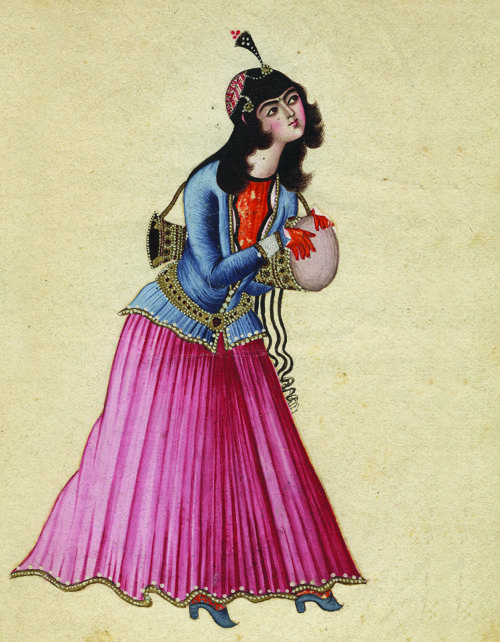
FAQ About Role of Choreography in Music Videos

What is choreography in music videos?
Choreography in music videos refers to the design and execution of dance movements that align with the music, enhancing the visual storytelling and impact of the video. It is often crafted by professional choreographers who work closely with directors and artists to create routines that fit the song's rhythm, mood, and theme.

Why is choreography important in music videos?
Choreography plays a crucial role in music videos as it helps to visually interpret the music and lyrics, adding a dynamic layer of expression. It can increase audience engagement by showcasing captivating and memorable dance sequences that often become iconic. Effective choreography can also reinforce the artist's brand and artistic vision, making the video more appealing and shareable.

How does choreography influence cultural trends?
Choreography in music videos often sets cultural trends by introducing new dance styles and moves that fans and viewers replicate. Famous examples like "Thriller" by Michael Jackson or "Single Ladies" by Beyoncé have not only popularized specific movements but have also influenced fashion, language, and pop culture on a global scale.

What are some iconic examples of choreography in music videos?
Some iconic examples of choreography in music videos include Michael Jackson's "Thriller," Beyoncé's "Single Ladies (Put a Ring on It)," and PSY's "Gangnam Style." These videos are known for their distinctive dance moves which have become embedded in popular culture, influencing subsequent productions and public dance trends.

How does choreography enhance audience engagement in music videos?
Choreography enhances audience engagement by creating visually captivating sequences that draw viewers in and keep them entertained. Memorable dance routines invite audiences to participate, often by learning and sharing the moves themselves, which can lead to viral challenges and increased video views and shares on social media platforms.

Who is responsible for creating choreography in music videos?
Professional choreographers are typically responsible for creating choreography in music videos. They collaborate with directors, artists, and sometimes even dancers to develop dance sequences that align with the artist’s vision and the song's themes. Top choreographers like Kenny Ortega, JaQuel Knight, and Parris Goebel have crafted widely recognized routines for various artists.

How does choreography reflect an artist's vision in music videos?
Choreography reflects an artist's vision by bringing their creative concept to life through dance. It helps convey the emotion and story of the song by aligning movements with the artist's intended message. In addition, it can enhance the artist's personal style and brand, creating a cohesive artistic identity across multiple projects.

What is the process of integrating choreography into music video production?
The integration of choreography into music video production involves several stages. It begins with conceptualization, where the choreographer collaborates with the artist and director to develop ideas that match the song’s mood and story. This is followed by rehearsals with dancers to perfect the routine. Finally, the choreography is filmed, often requiring precise coordination with the camera crew to capture the movements effectively.

How do dance trends from music videos spread globally?
Dance trends from music videos spread globally through online platforms like YouTube, TikTok, and Instagram, where fans can view, share, and replicate the choreography. Viral dance challenges often emerge, leading to widespread participation from international audiences. This global dissemination influences cultural movements and helps shape contemporary dance styles.

Can choreography in music videos impact the song's commercial success?
Yes, choreography can significantly impact a song’s commercial success. A well-executed dance routine can make a music video more captivating and memorable, attracting millions of views and shares. Iconic dance moves can become synonymous with the song, increasing its popularity and leading to higher sales, streaming numbers, and concert attendance.

What role do dancers play in music videos with choreography?
Dancers play a crucial role in music videos by bringing choreography to life with their movements and expressions. They interpret the choreographer’s vision and enhance the visual appeal of the video. Skilled dancers can elevate the overall performance, making the video more engaging and memorable for the audience.

How can beginners learn choreography from music videos?
Beginners can learn choreography from music videos by watching tutorials on platforms like YouTube, where many choreographers and dancers break down routines step-by-step. Participating in dance classes and workshops that focus on recreating popular music video dances can also be beneficial. Practice and patience are key to mastering any dance routine from music videos.

What challenges do choreographers face when creating for music videos?
Choreographers face several challenges when creating for music videos, including time constraints, budget limitations, and the pressure to deliver routines that are both unique and engaging. They must also adapt to the artist’s style and vision while keeping the choreography fresh and relevant to current trends, necessitating continuous creativity and flexibility.

How can music video choreography influence fashion?
Music video choreography can influence fashion by introducing and popularizing clothing styles and accessories worn by dancers and artists during performances. Outfits that complement dynamic movements often gain attention, leading to trends that fans emulate. Iconic videos like Madonna's "Vogue" have showcased fashion-forward styles that become synonymous with the choreography itself.

What techniques do choreographers use to make music video dances memorable?
Choreographers use several techniques to make music video dances memorable, such as incorporating unique or signature moves that stand out, syncing movements precisely with the music, and ensuring the dance routine tells a visual story. They often experiment with formations, rhythms, and cultural influences to create a captivating and distinct performance.

Are there any downsides to focusing too heavily on choreography in music videos?
Focusing too heavily on choreography might overshadow other important elements such as lyrical content or the overall narrative of the music video. It could also lead to repetitive styles that might not appeal to all viewers. Striking a balance between dance, music, and storytelling is essential to create a well-rounded music video that captures and retains audience interest.

What influence do music video choreographies have on live performances?
Music video choreographies significantly influence live performances by providing a framework that artists can adapt for stage shows. A successful music video routine often translates into dynamic live performances, allowing fans to experience their favorite dances in real-time. This continuity helps reinforce the song's identity and boosts audience excitement during concerts.

How do choreographers ensure dance sequences fit the tone of the song?
Choreographers ensure dance sequences fit the song’s tone by studying the lyrics, mood, and rhythm of the music. They aim to align movements with emotional beats and highlights of the song, using techniques such as tempo matching and thematic interpretation. Collaborating with the artist also helps to ensure that the dance accurately represents the intended artistic message.

Can choreography change the meaning or perception of a song in a music video?
Yes, choreography can change the meaning or perception of a song by adding layers of visual metaphor and emotion that might not be immediately apparent through audio alone. Dance movements can highlight specific themes or emotions, offering new interpretations and enhancing viewer connection to the song’s narrative.
